 Written by Megan Smith, PT
Written by Megan Smith, PT
Generally, the world is not adapted to people with special needs, but adaptive equipment bridges the gap between independence and inclusion. Adaptive equipment makes it possible for children with developmental delays, medical conditions, psychiatric conditions, and/or congenital conditions to reach their full potential.
Adaptive equipment are tools, devices, or machines that are generally used by children who have a disability to assist with daily living activities. This equipment includes seating and positioning supplies that keep them comfortable and supported, toys that assist in learning, sensory, and mental development, and safety supplies like braces and splints.
|
·Wheelchairs |
Wheelchairs and special strollers allow children with reduced mobility to take part in everyday activities. Whether electric-powered, self-propelled, or pushed, a wheelchair or stroller gives a disabled person the freedom to sit upright, move within their environment, and interact with other people.
Pediatric wheelchairs come in a variety of shapes, colors, sizes, and configurations. When choosing the right wheelchair for your child, it’s important to consider the following: rear wheel size, portability, growth adaptability, manual or electric, what type of leg rest your child will need, and any optional upgrades or customizations your child may want. When deciding on these components, it’s important to think through the lifestyle you and your child live. Do you need your wheelchair to be lightweight and foldable for ease of transport? If so, a manual wheelchair would better fit your needs. For more information and an in-depth look at all of these elements, check out our article on our Top 5 Best Pediatric Wheelchairs.
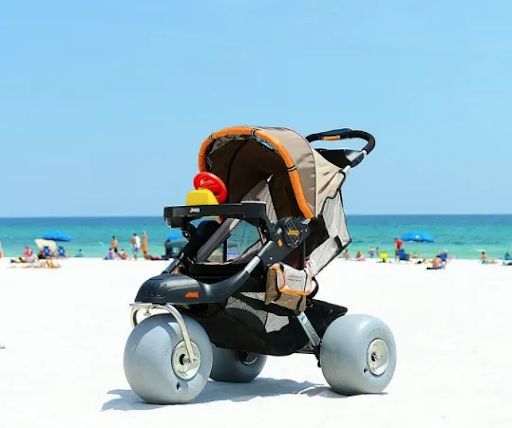
Special needs strollers provide postural support and often accommodate medical equipment with enhanced safety features. Special needs strollers are usually lighter, compatible with a variety of terrains, easier to push, and foldable for convenient transport than wheelchairs. For an overview to equip you to make an informed purchasing decision, check out our article How to Choose the Best Pediatric Special Needs Stroller.
Pediatric mobility aids are a type of adaptive equipment designed to promote safety and comfort for children who need added support while moving through the world.
Pediatric walkers are mobility aids that provide balance and stability. They are used by children who can bear some weight through their legs and take steps but still require some assistance. Pediatric walkers are adjustable to accommodate a child’s growth, with several models providing additional support with postural correction and gait training. Walkers can be customized with Pediatric Walker Accessories like walker glides, storage bags, harnesses, and postural stabilizers. There are many design options available, but you can save additional time on your search by reading How to Choose the Best Pediatric Walker.
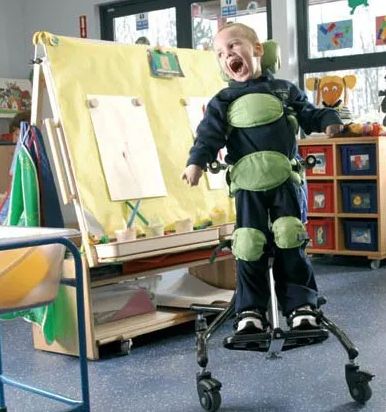
Pediatric standers, also referred to as standing frames and stand systems, are special needs products that serve children with developmental delays, disabilities, and other physical challenges. Standing devices facilitate standing upright at intervals throughout the day. Using them can improve circulation and achieve joint weight-bearing ability while improving bone density. With many designs, sizes, and configurations to choose from, our more in-depth article titled How to Choose the Best Pediatric Stander will help you narrow your choices when it comes to choosing the most beneficial features.
A gait trainer is an aid that properly stabilizes, supports, and assists through unweighted support and postural alignment to facilitate gait practice. Gait trainers provide more weight-bearing and balance assistance than a standard rollator walker. They come with or without seats or harnesses and can be designed as an anterior unit, a posterior unit, or have both units combined. To further evaluate which gait trainer would best suit your individual situation, we recommend our detailed guide: How to Choose the Best Pediatric Gait Trainer.
Special needs chairs, pediatric positioning, sitters, and therapy chairs help facilitate safe and comfortable participation in activities at school and home.
Adaptive seating, also referred to as active seating or dynamic seating, allows for more freedom of movement. This benefits kids in wheelchairs or with limitations that don’t allow them to independently reposition themselves. Many seating options enable adjustable, active positioning control and function, which are important for supporting early intervention to achieve maximum physical and cognitive progress.
High-low chairs are versatile activity chairs for children who need extra postural support. High-low chairs ergonomically assist caregivers by providing easy access to the child, allow face-to-face eye-level peer interaction, accommodate tables and desks via height adjustability, support kids with extreme positioning needs, and allow for mobility between rooms. They come with many accessories and options to create individualized support depending on your child’s needs.
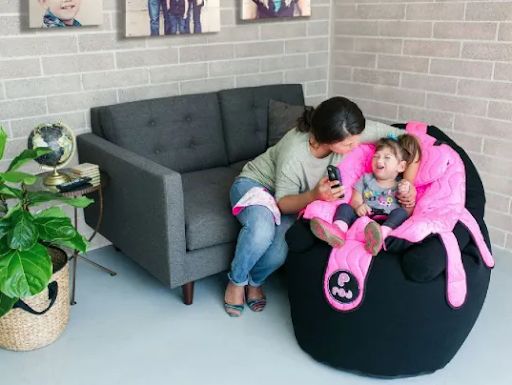
Activity chairs are also known as adaptive chairs, special needs chairs, pediatric positioning chairs, sitters, or therapy chairs. They cultivate inclusiveness in the classroom, allowing a special needs student to better participate in activities alongside classmates. Pediatric activity chairs include classroom chairs, corner chairs, kinder chairs, floor/infant sitters, portable seating inserts, and other specialized active seating designs like t-stools, roll chairs, and therapy chairs. For more information on activity chairs, we recommend a quick look at our previous article: How to Choose the Best Classroom Pediatric Activity Chair.
An adaptive desk is a tool designed for use with a classroom chair, alternative seating system, or wheelchair to provide a comfortable workspace for a child who doesn’t use a traditional chair or requires accommodations for a disability. This desk accommodates adaptive seating such as a chair that allows a student to wiggle or rock because of sensory issues or ADHD, or perhaps it tilts to accommodate positioning limitations. Students who need a learning environment structured around limitations that keep them from comfortably using a traditional desk will benefit from the flexibility provided by an adaptive desk.
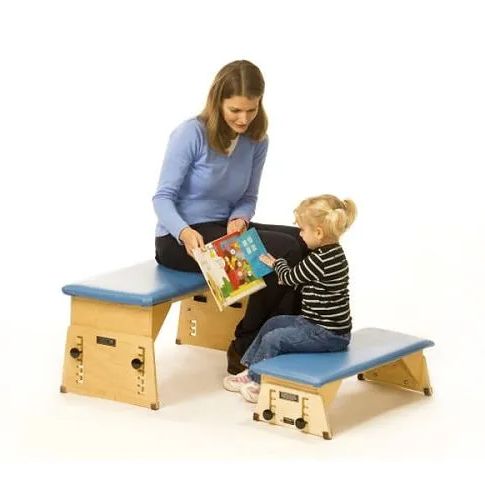
A therapy bench develops posture and balance while students participate in daily activities. This special needs adaptive equipment addresses different postural issues such as placing more weight on the feet, preventing knees from bowing inward, or facilitating proper sitting posture.
Traditional car seats are outgrown easily, so when choosing the right car seat for your special needs child, it’s important to consider their age, weight, and individual needs. There are many options in the current market for car seats specially adapted for older teens and adult children who might be dependent on their caregivers. By ensuring kids are properly supported during car rides, travel opportunities emerge that help enrich their lives and support their growth and development.
Physical activity helps maintain a healthy body, and movement activities help build brain structure. Since children often move and learn while playing, movement and play are important components of development. Active play helps develop the parts of the brain that regulate behavior and emotions.
Swings have long been a playground staple. In addition to being a fun activity, swinging contributes to a child’s sensory, social, and muscular development. Special needs adaptive swings provide an inclusive movement and play experience for kids with disabilities.
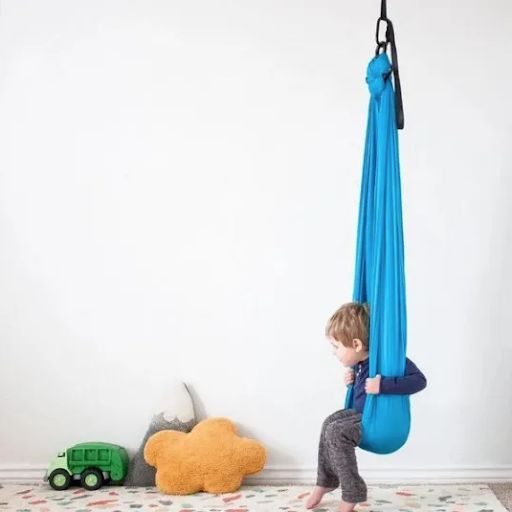
For kids with a sensory processing disorder, ADHD, or autism spectrum disorder, a sensory swing creates a soothing and safe environment to either calm an overstimulated nervous system or provide stimulation to facilitate system regulation. Sensory swing features contribute to increased attention spans and improved coordination.
Adaptive tricycles are modified trikes that deliver recreation, exercise, and therapy opportunities for kids with special needs. These special needs pieces of equipment support the development of balance, coordination, and motor skills for kids who aren’t physically able to operate a standard trike or bike.
Play is such a huge part of a young person’s development, that every child - no matter their ability or disability - needs access to play spaces that facilitate and support their growth. Research has shown that outdoor play stimulates the development of speech, cognition, gross motor, fine motor, and social skills. Also called an inclusive playground or adaptive playground, a special needs playground ensures everyone who wants to play has the opportunity to do so.
Children develop and learn by interacting with their environment. Sometimes kids with sensory issues need extra help engaging with their senses, processing feedback to their sensory systems, and regulating their sensory needs. Sensory-motor play and using sensory toys, also called stimming toys, incorporates fun in multiple sensory experiences that encourage growth and progress while children interact with their environment.
Children who have trouble with sensory integration face problems with development, information processing, and behavior. They have difficulty making connections between their sensory systems, any of which can be overactive or not active enough as a child interacts with their environment. Their brains might fail to integrate or organize new information appropriately.
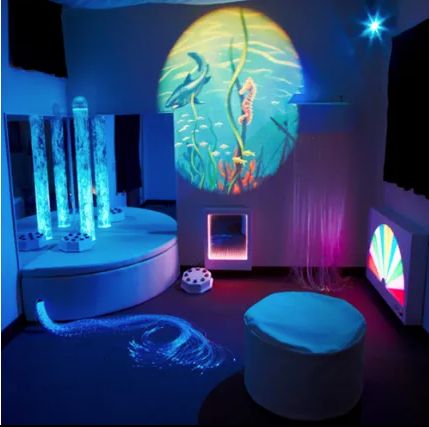
Multi-sensory environments provide a variety of sensory stimulation for people with autism and other special needs. Sensory devices help kids living with sensory processing disorder overcome aversions to textures, tastes, smells, sounds, and movement, which helps them organize and integrate the sensory input they receive.
Visual receptors located in the eye are stimulated by light, color, and movement. Visual processing refers to how the brain interprets and uses the incoming data it receives from the eye. Kids who struggle with visual processing and require visual aids might have difficulty seeing the difference between similar things, they might confuse shapes like a circle and an oval, not be able to distinguish something from its background, struggle to find hidden pictures of information on a page, not be able to determine the order and sequence of symbols and words, reverse or misread words or numbers, and have visual-spatial issues.
Auditory stimulation therapies are used to stimulate and balance sensory processing in children who have difficulties with sensory organization and processing. These adaptive toys assist children with SPD in developing sensory-motor skills, stimulating the senses, encouraging exploration, and facilitating sensory integration.
Tactile toys use touch and texture to help a child with sensory issues move toward being able to better interpret, process, and regulate sensory information. Toys that keep kids engaged will turn fun play activities into opportunities to support therapeutic goals. A great example of fun equipment designed to assist in sensory integration is a pediatric ball pit. They satisfy the body’s need for physical input by providing a combination of proprioceptive and tactile activation while addressing touch, movement, and position sensory disorders.
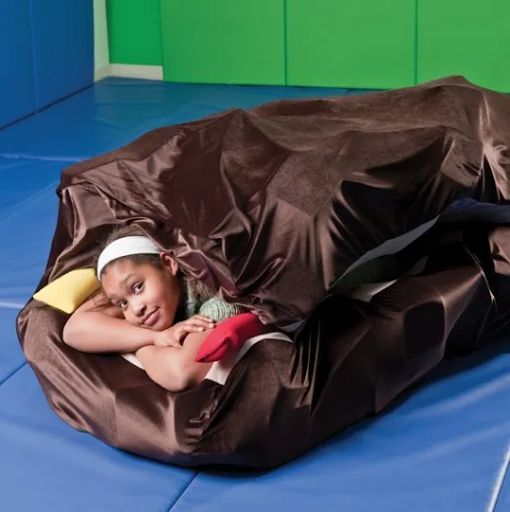
Weighted products are generally constructed of soft fabrics, which provide calming sensory input, and deep pressure provides sensory information to muscles and joints that soothes, calms, and helps reduce fidgeting for kids who have sensory processing difficulties. Weighted sensory products come in many shapes such as blankets, vests, lap pads, and animal-shaped toys, and can help calm a child with proprioceptive input to the brain.
Vestibular disorders can cause dizziness and loss of equilibrium. Specific exercises used in vestibular rehabilitation therapy (VRT) work with the central nervous system to reduce or eliminate symptoms. Vestibular therapy includes equipment designed to desensitize the inner ear system, coordinate head and eye movements, improve balance, and improve general fitness for anyone with a vestibular disorder.
Assistive technology (AT) is any item that maintains or enhances learning, working, and daily life activities for someone with special needs. These devices can be a piece of equipment, software, or a product system.
Augmentative and alternative communication (AAC) devices assist non-verbal special needs individuals to communicate or express thoughts, wants and needs without speaking. AAC devices assist those who can’t speak clearly in communicating without speech, allowing them to be more fully engaged in school, daily activities, and social settings.
For those with limited or no mobility and control of their arms and hands, mouth sticks and pointers make it possible to accomplish tasks without using their hands. They promote independence and confidence as the user directs the pointer, most of which have an attachment that will hold a writing tool, using head movements to write, draw, or type on a keyboard.
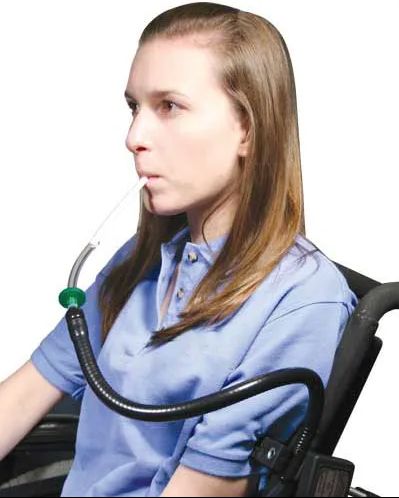
Assistive technology switches help control things like sequential message communications, computer functions, and environmental controls. They can be controlled by small or large buttons, sip/puff, footswitches, facial movement, or movement sensors. There are power interrupters that can help with access to equipment plugged into an outlet, and switches can be wireless too. Pediatric assistive technology switches are used to accomplish tasks like moving from one place to another, turning something on or off, playing with toys, and communicating.
Switch interfaces are electronic bridges providing access to powered devices. While adaptive switches can be applied to anything electronic, the switch interface is where the switch plugs in. With other interfaces, the same switches that control the power to turn something on or off can also control advanced electronics, such as telephones and computers.
Mounting devices, or holding devices, are either attached to the arm of a wheelchair or a table or they can be free-standing. They hold items like tablets, mirrors, cups or bottles, and adaptive switches.
For kids who have weak muscles and lack strength and control in their wrists and upper arms, writing aids support proper hand and wrist position and help build hand strength and coordination. Because there are several conditions that benefit from different writing aids, researching what’s available will help you shop for writing aids and choose the best one for your child. Writing legibly can be difficult for kids dealing with spasticity, tremors, developmental delays, or low muscle tone, so pediatric writing aids contribute to a student’s success by facilitating better handwriting.
Orthopedic adaptive equipment focuses on the musculoskeletal system, which includes muscles, bones, joints, ligaments, and tendons. These devices can support, correct, and protect the user during therapy or everyday activities.
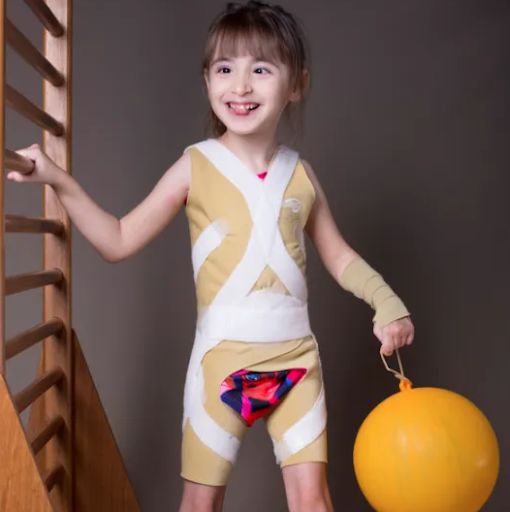
TheraTogs address a wide variety of physical and neurological conditions that can impair movement and coordination. These garments are worn between physical therapy sessions to extend treatment times while wearers go about daily life activities.
Some individuals with special needs have a high risk of sustaining a head injury. Protective helmets greatly lower the fall and injury risk for kids with a seizure disorder, traumatic brain injury, or who are demonstrating headbanging behavior. There are many different models on the market, including helmets that are discreet and look like regular baseball caps, bucket hats, and knitted caps.
Good posture has physical and mental benefits, while poor posture can cause pain, lack of concentration, and perhaps issues with breathing and digesting food. Children who don’t have the strength or coordination to independently maintain proper body positioning benefit from the assistance of bracing and support products to immobilize a specific area of the body and could also benefit from positioning support products to support proper body alignment and posture.
Orthosis is another term for an orthotic device. This equipment is used to correct deformities and provide functional improvement. Orthotic devices come in a variety of forms for every type of need, such as pediatric splints and braces, goniometers, pediatric orthotics, air splints, hand splints, and hip abduction braces.
A variety of therapeutic interventions are available for children with special needs. Physical, occupational, and behavioral therapies use adaptive equipment to support the growth and development of special needs kids so they can maximize their participation and enrichment in everyday life activities.

Gross motor skills involve the large muscles of the body that enable walking, maintaining balance, kicking, jumping, lifting, sitting up, coordination, and reaching and throwing. Low muscle tone is a byproduct of several central nervous system disorders, genetic, and muscle disorders. A child’s gross motor abilities share connections with other functions requiring physical coordination.
Vertigo and dizziness caused by vestibular disorders are treated by exercises designed to repeat the movements that cause vertigo and dizziness. Because even moderate dizziness can have a very negative impact on quality of life, choosing the right vestibular equipment can vastly improve a patient’s daily life.
Pediatric aquatic therapy, also called aquatic rehabilitation or water therapy, uses water as a medium for restoring or improving physical functioning affected by injury, disability, or illness. Aquatic Therapy incorporates specific movements and exercises while fully submerged, partially submerged, or floating. Water therapy offers many different mental and physical health benefits, commonly focusing on restoring or improving the physical function affected by disability, injury, or illness. It’s considered a great way to mitigate pain and inflammation for several conditions.
Balance Therapy is designed to improve the primary problems caused by vestibular disorders. Devices designed for balance therapy include products that help with dizziness, vertigo, gaze instability, falls, and imbalance. It is also applied to related secondary disorders, such as fatigue, nausea, vomiting, and inability to concentrate. Balance therapy is possible with T-stools, balance boards, agility ladders, bounce paths, obstacle sets, and more to fulfill the unique therapy requirements of each individual child.
There are few greater callings than to provide care for someone with special needs. In support of caregivers, there are devices and equipment available to make the job of tending to a person with special needs a little easier.
Since children with special needs don’t always outgrow the need for diaper changes at the same rate as other kids, changing tables need to be able to handle diaper changes and clean up of bigger, older kids.
Pediatric eating aids are utensils and adaptive equipment that promote independence by allowing kids to feed themselves. These include bowls, plates, and utensils that not only make mealtime more enjoyable and successful for the user but also simplify meals for a caregiver.

For parents and caregivers of special needs kids, bath time can be challenging. It should be safe and fun for the child and manageable for the caregiver. It can also be challenging to choose the correct bathing equipment, so we put together a guide on How to Choose the Best Pediatric Bath Assist Equipment to demystify these products and their many useful features that make bath time more enjoyable for everyone.
Disabilities can present barriers to personal hygiene for children with special needs. Functional limitations can get in the way of personal care, so special needs products that allow for bathing or showering contribute greatly to the overall well-being of a special needs child.
Potty chairs and toilet support seats make toileting safe, comfortable, and easy for kids with special needs and their caregivers. These aids attach easily to a standard-size toilet and make it easier for a caregiver or the individual themselves to properly take care of their own personal hygiene when it pertains to wiping and using the toilet.

For parents of children who wander at night or have difficulty settling down when it’s time for bed, safety beds can ensure a safe and comfortable night’s sleep. These beds are also called institutional beds, adaptive beds, enclosed canopy beds, special needs beds, and child-safe beds.
Special needs products enable special needs children to experience, enjoy, and engage with their world in ways they would not be able to do without adaptive equipment.
It can be overwhelming at times to manage the care of a child with special needs. Our extensive library of informative articles can help you navigate your options for creating the best environment and opportunity for growth and development for your child.
Thank you for taking the time to review the information resources featured in this comprehensive guide to special needs adaptive equipment. More helpful articles can be found at Caregiver University.

Megan has been a part of Rehabmart since its inception nearly 20 years ago. For the past several years she has been enjoying her role as HR Director while maintaining her Physical Therapy license. When she isn't working on her next in-service or working to find a new team member, she enjoys her five children, helping those who have PT type ailments, baking, practicing yoga, and working out.